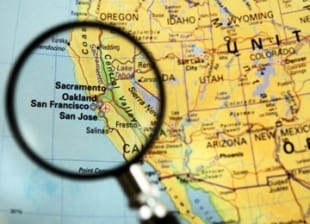California takes first step toward creating grid of the future : Renew Economy
 In California, where rooftop solar PV, distributed energy storage and energy-engaged consumers are becoming an increasingly important part of the grid mix, state regulators and utilities are starting to think about how these grid-edge systems will work together for the benefit of the grid, the environment and ratepayers alike.
In California, where rooftop solar PV, distributed energy storage and energy-engaged consumers are becoming an increasingly important part of the grid mix, state regulators and utilities are starting to think about how these grid-edge systems will work together for the benefit of the grid, the environment and ratepayers alike.
By Jeff St John on 14 August 2014
 In California, where rooftop solar PV, distributed energy storage and energy-engaged consumers are becoming an increasingly important part of the grid mix, state regulators and utilities are starting to think about how these grid-edge systems will work together for the benefit of the grid, the environment and ratepayers alike.
In California, where rooftop solar PV, distributed energy storage and energy-engaged consumers are becoming an increasingly important part of the grid mix, state regulators and utilities are starting to think about how these grid-edge systems will work together for the benefit of the grid, the environment and ratepayers alike.
This week, the California Public Utilities Commission plans to open a new proceeding to decide how the state will take on this herculean effort (PDF). The goal is to create a process for maintaining and growing the distribution grid — the part of the grid that delivers energy to end customers — that takes all the distributed energy resources coming onto the grid into account.
CPUC’s new Order Instituting Rulemaking is the first step in a process started by AB 327, a law passed by the California legislature last year that makes major changes to state energy policies. While AB 327’s electricity tariff and net metering rule changes have gotten the most attention, the law also sets a June 2015 deadline for the state’s big three utilities — Pacific Gas & Electric, Southern California Edison and San Diego Gas & Electric — to create new models for planning distribution grid investments that “integrate cost-effective distributed energy resources” into their models.
California’s big three utilities spend roughly $6 billion per year on distribution grid investments, via Distribution Resources Plan (DRP) proposals submitted to the CPUC. But today’s DRPs have no mechanisms to determine how lots of rooftop solar, customer-sited or grid-located energy storage, and demand response will impact that future.
That’s a problem, because California could see 15 gigawatts of these distributed energy resources (DERs) come on-line this decade, including 12 gigawatts of distributed solar, 1 gigawatt of grid-scale energy storage, andanother gigawatt of demand response. Leave these DERs out of the equation, and utilities have no way to know whether or not their $6 billion annual investments are going to support a DER-rich grid.


No comments:
Post a Comment